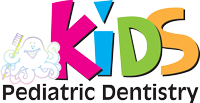20 May Is your child’s primary tooth broken/chipped?
Unfortunately chipping or breaking a baby tooth/primary tooth is a common accident that can happen for any child. Most kids are highly active since they are toddlers. From the time they start walking, they are trying to discover everything around them and as such, they may fall down on some hard object and chip and break their teeth and for older kids, getting involved in sports, dance, playing with their friends, increase the chances of them bumping to some object that may cause them to chip and crack their teeth. If your child chip/breaks his or her primary tooth, there are a few things you can do at home before you take your child to your pediatric dentist:
- Wash your child’s mouth with cold water and apply a cold compress to reduce the swelling.
- Make sure you find the chip fragment of the broken tooth just to make sure your child did not swallow the broken or chip fragment.
- If you cannot find the chipped/broken tooth check to make sure your child is breathing normally.
- If you see your child is not breathing normally please take your child to the emergency room as he may have aspirated the object.
What to expect when you take your child to the pediatric dentist for a chipped/broken tooth?
Your pediatric dentist can recommend many different dental treatments for your child based on how badly your child damaged her/his tooth. Here are some examples:
- If it is only a small chip on your child’s tooth your pediatric may recommend doing a resin filling.
- If the chip is excessively big and tooth filling may not be strong to keep tooth together your pediatric may recommend your child to do a steel stain crown or white covered crown.
- If your child’s tooth root is exposed, your pediatric dentist may recommend doing pulp therapy which is like a root canal treatment for kids. This allows the tooth not to get infected and if your child ends up getting pulp therapy, she/he also needs a steel stain crown on that damaged tooth as well. Since pulp therapy only prevents the tooth from getting infected, it can also make the tooth weaker. As a result, your child will need a stainless-steel crown to keep the tooth strong and from not breaking.
- If your child’s tooth is broken to the gum line your pediatric dentist may recommend extracting the tooth. If your child ends up extracting primary/chipped tooth, make sure you talk to your pediatric dentist about getting a space maintainer to hold the space and allow the adult tooth to come in the right location.
How to explain the dental treatment to your child after breaking/chipping a tooth?
Having a chipped tooth or broken tooth can be awfully hard for kids to
understand. Your child is maybe very afraid of getting a tooth extracted or getting any dental treatment done. Most pediatric dentists offer nitrous oxide or laughing gas to calm your child before any dental treatment. There are also other options for anxiety for dental treatment for children like oral sedation and IV sedation. Make sure you discuss your options with your pediatric dentist as far as sedation to make sure your child has good experience for getting the necessary dental treatment. If you have any questions, please do not hesitate to contact Dr. Lisi at (972) 727-0011. Remember to visit your Allen pediatric dentist Dr.Lisi, for any dental emergency care for your children.
For more dental health-related reading:
